Sharing the results from my latest Moth Trap Session. I have written posts about setting up a moth trap and on collecting the results if you want some more background info on how and why I use a Moth Trap

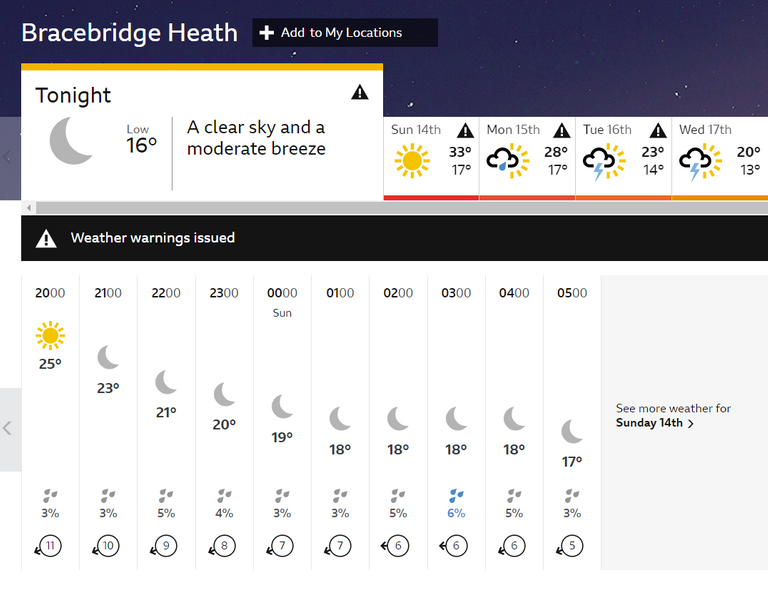
Date: 13th August 2022
Weather:
Its been another week since my last moth trapping session. Can't belive how quick this year is going... already in August! The plus side of that is the nights fall earlier and earlier. The sooner darkness arives, the sooner the moth trap goes on!
We are currently in a another spell of hot dry weather. Not as hot as a few weeks back, but still warmer than normal. Today was highs of 30C and tomorrow is forcast to be 33C. The bigger issue still is the lack of any significant rainfall. There is rain on the way next week, but still only scattered thunderstorms... we really could do with a period of solid rain for a couple of weeks, and that doesn't look forth coming.
Anyway, trap is on... temperatures are warm but dropping quickly as night falls, here we go!
Results: 71 moths of 30 species
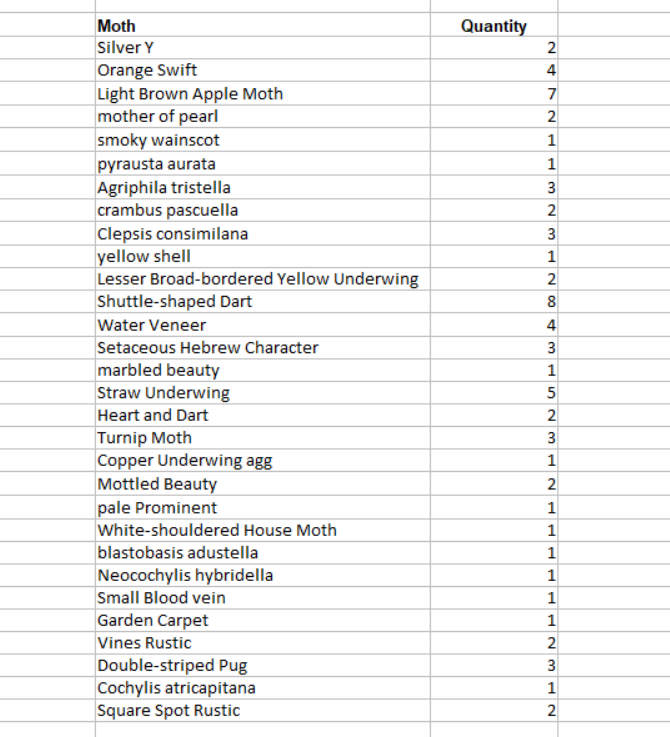
Summary of Results:
Last week the results were just 45 moths of 18 species. I know that after the peak in numbers in July, the numbers will slowly decrease. Even so, I was surprised how low it was... as it tuned out it was just a blip (possibly due to weather).
As you can see from the table above, the numbers are closer to what I would expect for the time of year, and it was fairly busy around the trap tonight
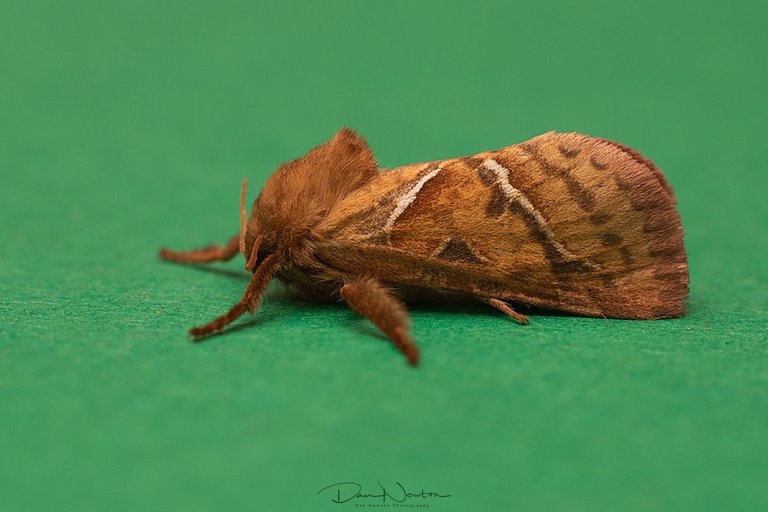
Orange Swift - Triodia sylvina (male)
The first moth of note was this Orange swift, one of 4 caught this evening. This is a male, which you can tell by the bright Orange colour. The females are nearly twice as big, and of a light brown colour.
Last night I caught 3 males and 1 females. I don't see the females very often, and so wanted to take a picture to add to my 'image library' but while she was in the pot she started laying eggs everywhere. I took the correct decision to release her immediately so she could lay them in a more suitable location
The below picture isn't mine but at least you can see what I mean about the difference in appearance.
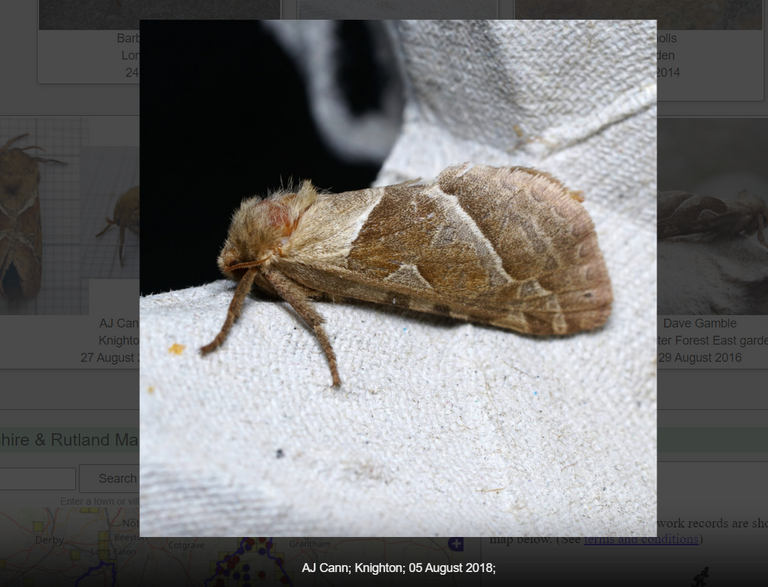
Orange Swift - Triodia sylvina (female) source
After that brief flurry of excitement, normality resumed, and the usual species started drifting in.
First were Light Brown Apple Moths landing near the trap, and then Silver Y's were seen feeding on nearby Red Valerian flowers. Then the usual common species like Shuttle-shaped Darts and Turnip moths arrived. All quite common, and most of them seen frequently this year.
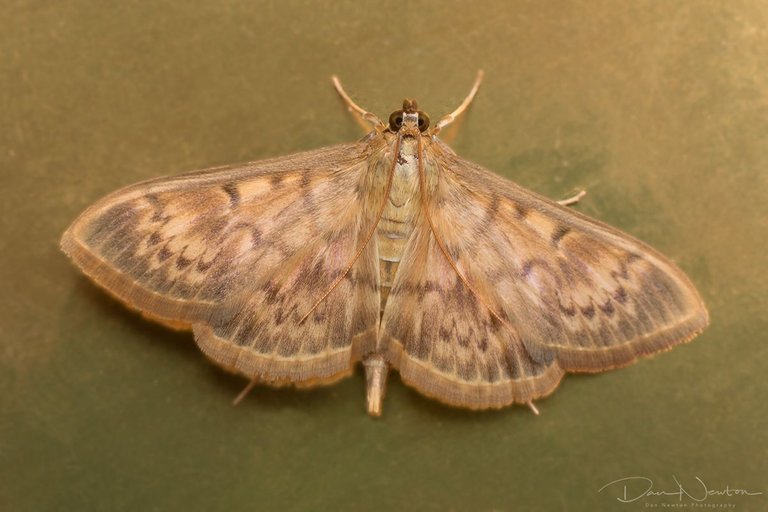
Mother of Pearl - Pleuroptya ruralis
Finally, something a bit more interesting.
Yes, yes I know, ALL moths are interesting, but to badly paraphrase Orwell, some moths are more interesting than others!
This is a Mother of Pearl, quite obviously named due to the beautiful wings that almost seem to shimmer. These are a fairly common species and are always a delight to see.
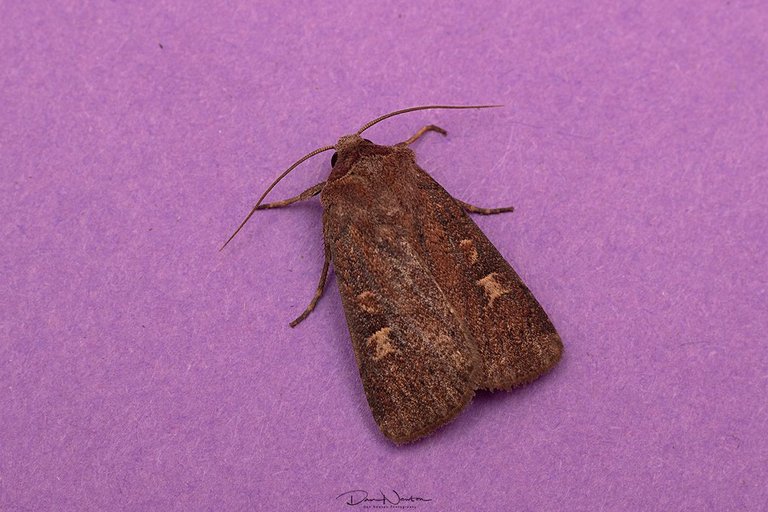
Square-spot Rustic - Xestia xanthographa
Next up was a couple of Square-spot Rustic's.
You should be able to see a squarish spot on each wing that gives this species its name
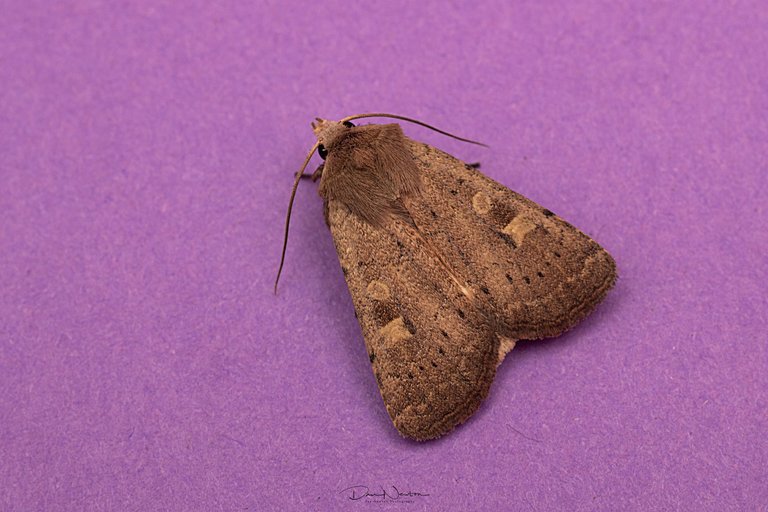
Square-spot Rustic - Xestia xanthographa
...and again.
It can be quite a variable species, but that squarish spot is still quite easy to see.
Next we have a couple of very similar and closely related Tortrix Moths:
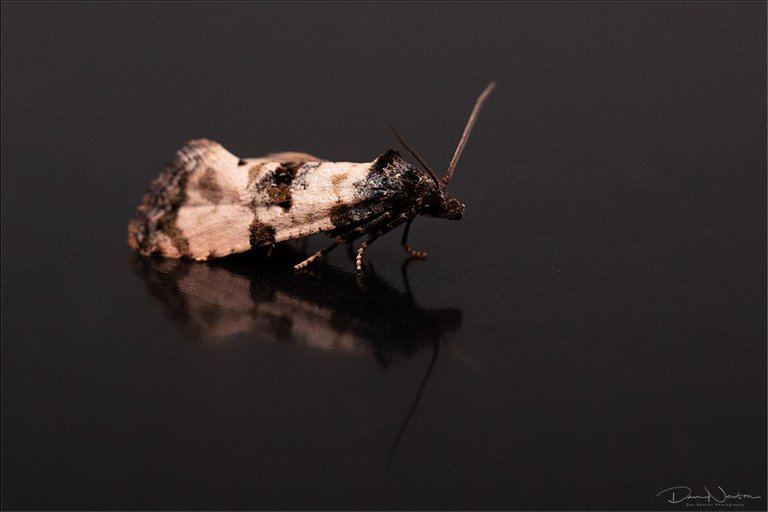
The one with a black head is Cochylis atricapitana
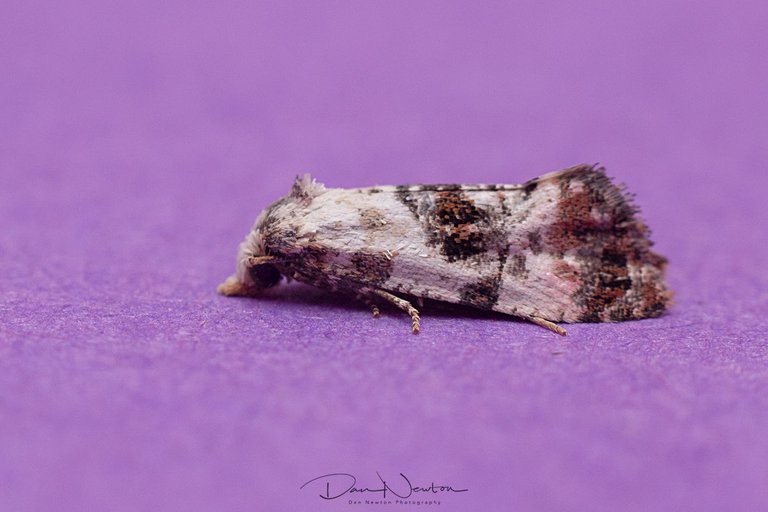
...and the one with with a white head is Cochylis hybridella
By this point the session was approaching 1:00 AM. I decided I had seen enough species to make it a worthwhile session, and began the process of turning everything off.
This involves turning the light of so moths are no longer attracted to it, and also by taking the lid off the trap so that any moths inside could fly away while it was still dark. While opening up the trap I spotted this Small Blood-vein inside
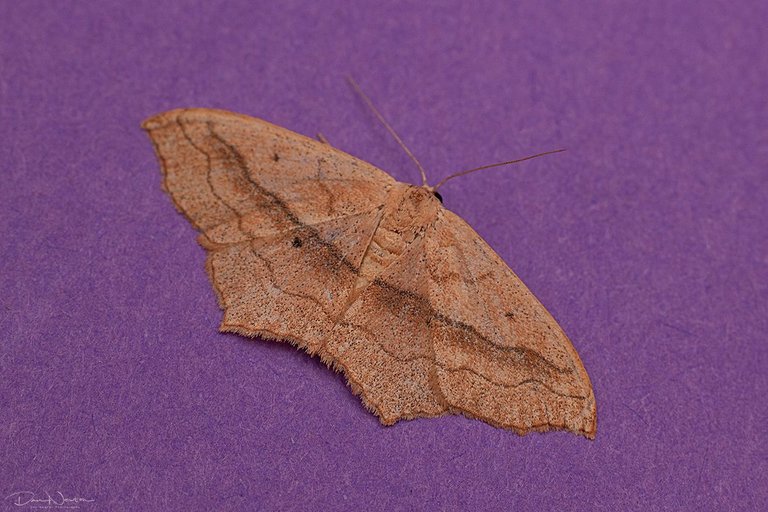
Small Blood-vein - Scopula imitaria
Bonus Picture
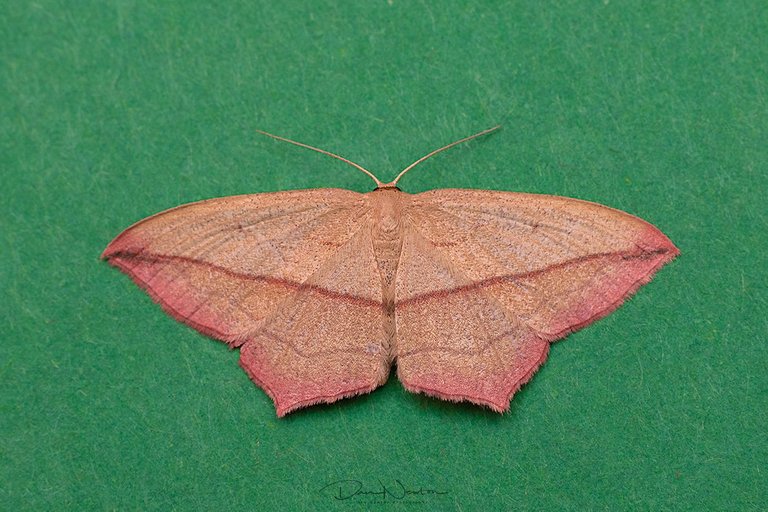
Blood-vein - Timandra comae
As a bonus today, I think I'll show an image of of the larger Blood-vein. This wasn't caught today, but see the smaller moth above made me think of this one.
You can see where the smaller species gets it's name, but the larger one is a much more distinctive looking species, with a bright red crossline going from wingtip to wingtip, and a subtle rosy pink colour running along the edge of the wings.
And with that, I'll draw this report to a close. You never know what is going to appear each time you turn on the light, and tonight's results ended up being quite interesting in the end.
What will I find next week?
Will there be anything rare or interesting?
More importantly, will we finally have had some rain by then? 😅
well, there's only one way you're going to find out!

Notes on Pictures: Since I started moth trapping 5 years ago, I have been slowly building up collection of Library Images. The idea being that once I have taken a picture of a particular species of Moth, I don't need another picture of the same species a year later. It’s a waste of time and energy. I only take pictures of new species, or of moths that are difficult to ID, so I can get the records verified.
While in my care, all individuals are looked after, and after Photographs have been taken, they are all released safely outside.
All names confirmed and checked via Wikispieces
Further Research from UK Moths and NatureSpot

If you have any thoughts or opinions on this article then I'd love to see your comments.
And if you really like the content then maybe you would like to upvote or re-hive it.

Check out my website for more of my work.

These are beautiful photos and I don't know much about moths, aren't they very difficult to identify if there's that many different types? I can see the square spot that you mentioned so that one seems easier but the moths I've seen here look very similar. How many different types are there in your area?
Thank you.
Er they can be ticky to identify. Lots of them are quite distinctive and 'obvious'... some of them look similar to an untrained eye, but an 'expert' will be able to tell the difference. And some are so similar that you need to take a specimen and look at it under a microscope. The last one is beyond my capabilities, so I just leave it at a species level (eg Noctua species*
There are many ways to differentiate them, including the 'time of year' Some species look similar but are adults in different times of the year. The Orange Swift (pictured above) is very similar to the Common Swift, but the Common Swift is only seen in April and May, whereas the Orange Swift is seen in August and September.
Habitat/location is also a clue, some are only seen in Scotland, some are only seen near water, some are associated with a certain type of tree such as Oak or Birch.
In my garden I have seen over 300 species of moth, in the local area I suppose there will be over a thousand species. And then across the whole country (all habitats and locations) is 2600 species.
It does amaze me how much variety can be seen in 'just' my garden, and I'm always looking for more new stuff to discover!
My word, you have just educated me so much on this.
I do like the ones you found, but am amazed at you finding over 300 species, that is insane to imagine that there can be such diversity in one kind of insect.
Do you also find the caterpillars and identify them or are they even more difficult than the moths?
I have a new appreciation for moths. I've always like the ones with the super furry antennae and fluffy feet. Thanks for the great info, I will be keen to see what else you find in the future :)
Every day is a school day! 😉
Remember 2500 species of moth is just in the UK, thers is an estimated 200,000 species of moth in the whole world. The mind boggles at the amount of diversity in just one group of insects!
Caterpillars are a lot harder. Some are distinctive and easy, but most are small and brown (or small and green). The easiest way is often to rear through a caterpillar (catch it and feed it until the adult eventually emerges)
Good to hear it, my work here is done! 😁
Large Emerald
Dusky Thorn
Hi Dan
Thank you so much, that is a huge number of species and to know even a fraction is admirable. I LOVE the big eyes on the Emerald and Dusky Thorn, they look like such funky little characters.
Makes sense to raise the caterpillars through to emerging as adults if they are hard to identify.
Definitely going to be more inclined to see what moths I can find now. They really are underappreciated and butterflies tend to get the spotlight. I like moths better 😄
Have a great day, thank you for being so informative!
Loved this one: Blood-vein and the patterning on this one: Mother of Pearl
yep, both beautiful moths... I think the Blood-vein edges it for me, I love the flush of pink along the edges of the wings
Yup, that's what caught my eye.
thank for sharing
We appreciate your work and your post was manually curated by @none! from the DNA team!
Reach us on Discord to learn more about the project!
We appreciate your work and your post has been manually curated by zoology team (oscurity,nelinoeva) on behalf of Amazing Nature Community. Keep up the good work!
always appreciate your support @nelinoeva and @oscurity Thank you!
30 moth species in one place??? OMG I thought I had seen myabe 3 or 4 species... !LOL
lolztoken.com
To arrrgh is pirate.
Credit: reddit
@dannewton, I sent you an $LOLZ on behalf of @svanbo
The LOLZ Tribe is here! Stake your LOLZ now to earn curation rewards and continue using the !LOLZ command. Please read our latest update for more information.
(1/6)
honestly, you'd be surprised at the variety of insect life active at night. My location is pretty poor, in the right habitat people can see 150+ species. And down in Europe you have even more species to see.
Oh really? I'll try and take a look if I spot more different ones over here... !PIZZA
Congratulations @dannewton! You have completed the following achievement on the Hive blockchain and have been rewarded with new badge(s):
Your next target is to reach 14000 upvotes.
You can view your badges on your board and compare yourself to others in the Ranking
If you no longer want to receive notifications, reply to this comment with the word
STOPTo support your work, I also upvoted your post!
PIZZA Holders sent $PIZZA tips in this post's comments:
@svanbo(2/5) tipped @dannewton (x1)
You can now send $PIZZA tips in Discord via tip.cc!